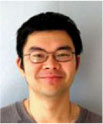Molecular Materials Meeting (M3@Singapore)
Joel K. W. Yang A and Andy Hor A BA Institute of Materials Research & Engineering (IMRE), Agency for Science, Technology & Research (A*STAR), 3 Research Link, 117602, Singapore.
B Corresponding author. Email: andyhor@imre.a-star.edu.sg

Joel K. W. Yang completed his SM (2005) and Ph.D. (2009) in Electrical Engineering and Computer Science at the Massachusetts Institute of Technology. During his doctorate studies, he worked with Professor Karl K. Berggren in the Quantum Nanostructures and Nanofabrication group on single-photon detectors, and sub-10-nm patterning using electron beam lithography and block-copolymer self-assembly. Following his degree, he was awarded the A*STAR Investigatorship to develop sub-10-nm patterning methods for plasmonics and bit-patterned media applications in the Institute of Materials Research and Engineering (IMRE). |

Professor Hor is the Executive Director of the Institute of Materials Research & Engineering of A*Star of Singapore, Professor of Chemistry at the National University of Singapore and President of the Singapore National Institute of Chemistry. His main research interests are organometallic complexes and catalytic materials. He has delivered numerous plenary, keynote and invited lectures in international conferences. He is an Associate Editor of Aust. J. Chem. (Commissioning) and on the international advisory board of Dalton Trans. (RSC), Inorg. Chim. Acta (Elsevier), and Chem. Asian J. (VCH-Wiley). He has published more than 280 international papers with annual citations of about 450. He obtained his B.Sc.(Hon) from Imperial College, D.Phil. from Oxford University, D. Sc. from University of London, and was a postdoctoral associate of Yale University. |
Australian Journal of Chemistry 64(9) 1181-1182 https://doi.org/10.1071/CH11299
Published: 16 September 2011
Organized by the Singapore A*STAR Institute of Materials Research and Engineering (IMRE), in partnership with other A*STAR institutes, the inaugural Molecular Materials Meeting (M3) held on the 10th and 11th of January 2011 in Singapore was a resounding success. With more than 60 talks by prominent scientists from across the globe and almost 90 poster presentations, this was an ambitious first meeting in many regards (Fig. 1). The conference also marked the inauguration of the International Year of Chemistry 2011 in Singapore.

|
This conference was strategically named to cover a broad spectrum of materials research. The term ‘molecular materials’ puts emphasis on creating materials with new applications by studying, designing, and engineering their basic building blocks, i.e. their molecules, using chemical methods and processing techniques.
By bringing together top minds from diverse fields, M3@Singapore aimed to foster new connections among scientists to discuss ideas targeted at the major technological challenges in selected application domains, i.e. health, urban lifestyle, high-value manufacturing, and sustainability.
The theme of the meeting was ‘Big Ideas in Molecular Materials’. This theme set the expectation for the 2-day meeting during which there were candid discussions.
This special issue of M3@Singapore comprises a selection of papers that epitomizes the current sentiments in molecular materials research, a sampling of which is mentioned in the following. In the focus article by J.M. MacLeod and F. Rosei (Université du Québec, Canada), the self-organization of molecules at solution/solid interfaces was investigated as a function of temperature.[ 1 ] A related paper on self-organization, i.e. the self-assembly of block copolymer molecules in aqueous solutions is presented by A. M. H. Leung et al. (University of Waterloo, Canada).[ 2 ] On a sustainability-related topic, K. J. Young et al. (Yale University, USA) contribute a paper on a photocatalytic cell for water splitting that was inspired by molecular studies of the photosystem II protein complex,[ 3 ] and W. Zhang et al. (National University of Singapore) contribute a paper on TiO2 nanorod photoelectrodes for dye-sensitized solar cells.[ 4 ] In the area of health technology, a paper on functionalized polymers for the detection of cells is presented by U. Latif et al. (University of Vienna, Austria),[ 5 ] together with two papers by X. D. Su et al. (Institute of Materials Research and Engineering, Singapore) on metallic nanoparticle interactions with DNA.[ 6 , 7 ] In addition, the readers will find several other stimulating papers in this issue.[ 8 – 17 ]
In this molecular age, if we can creatively design, synthesize, process, and apply materials using molecular techniques, we can certainly expect quantum leaps in advances in materials research. We believe that the solution to the hard problems in science and technology will be found in the scrutiny of materials from the molecular level to the nano-scale. The advances of the likes of carbon-materials such as fullerenes and graphene and hybrid materials like nano composites and hetero-structures are just some successful examples. If chemistry can energize the biology field to the extent that it could create a new field called ‘chemical biology’, there is every reason to be enthusiastic about the future of molecular materials. It also explains why, in Singapore, we are determined to sustain the annual M3@Singapore meetings with the next one scheduled for 9–11 January 2012.
References
[1] J. M. MacLeod, F. Rosei, Aust. J. Chem. 2011, 64, 1299.| Crossref | GoogleScholarGoogle Scholar |
[2] A. M. H. Leung, V. Ng, Y. K. Ho, L. Zhou, H.-P. Too, K. C. Tam, Aust. J. Chem. 2011, 64, 1247.
| Crossref | GoogleScholarGoogle Scholar |
[3] K. J. Young, Y. Gao, G. W. Brudvig, Aust. J. Chem. 2011, 64, 1221.
| Crossref | GoogleScholarGoogle Scholar |
[4] W. Zhang, R. Zhu, B. Liu, S. Ramakrishna, Aust. J. Chem. 2011, 64, 1282.
| Crossref | GoogleScholarGoogle Scholar |
[5] M. Polreichova, U. Latif, F. L. Dickert, Aust. J. Chem. 2011, 64, 1256.
| Crossref | GoogleScholarGoogle Scholar |
[6] K. M. M. Aung, Y. N. Tan, K. V. Desai, X. Su, Aust. J. Chem. 2011, 64, 1288.
| Crossref | GoogleScholarGoogle Scholar |
[7] M. Low, S. Yu, M. Y. Han, X. Su, Aust. J. Chem. 2011, 64, 1229.
| Crossref | GoogleScholarGoogle Scholar |
[8] B. Du, S.-C. Yuan, J. Pei, Aust. J. Chem. 2011, 64, 1211.
| Crossref | GoogleScholarGoogle Scholar |
[9] N. L. Yakovlev, M. V. Kiryukhin, M. N. Antipina, T. T. Susanto, S. Ravi, M. Adithyavairavan, G. B. Sukhorukov, Aust. J. Chem. 2011, 64, 1295.
| Crossref | GoogleScholarGoogle Scholar |
[10] S. Xiong, J. Liu, X. Lu, Aust. J. Chem. 2011, 64, 1196.
| Crossref | GoogleScholarGoogle Scholar |
[11] G. K. L. Goh, K. Y. S. Chan, G. S. Huang, Q. L. Tay, Aust. J. Chem. 2011, 64, 1235.
| Crossref | GoogleScholarGoogle Scholar |
[12] Y. Hong, J. Wing Yip Lam, S. Chen, B. Zhong Tang, Aust. J. Chem. 2011, 64, 1203.
| Crossref | GoogleScholarGoogle Scholar |
[13] H. Hussain, E. Amado, J. Kressler, Aust. J. Chem. 2011, 64, 1183.
| Crossref | GoogleScholarGoogle Scholar |
[14] X. Sui, A. Di Luca, M. K. Gunnewiek, E. S. Kooij, C. A. van Blitterswijk, L. Moroni, M. A. Hempenius, G. J. Vancso, Aust. J. Chem. 2011, 64, 1261.
| Crossref | GoogleScholarGoogle Scholar |
[15] J. Hobley, S. Gorelik, Y. Kuge, S. Kajimoto, M. Kasuya, K. Hatanaka, H. Fukumura, Aust. J. Chem. 2011, 64, 1274.
| Crossref | GoogleScholarGoogle Scholar |
[16] M. Samoc, T. C. Corkery, A. M. McDonagh, M. P. Cifuentes, M. G. Humphrey, Aust. J. Chem. 2011, 64, 1269.
| Crossref | GoogleScholarGoogle Scholar |
[17] R. P. Davies, P. D. Lickiss, K. Robertson, A. J. P. White, Aust. J. Chem. 2011, 64, 1239.
| Crossref | GoogleScholarGoogle Scholar |


